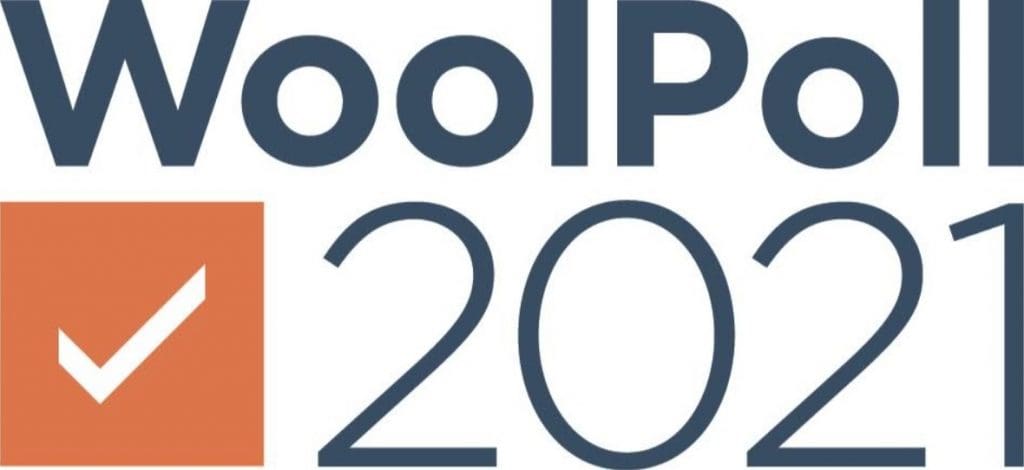 IN A massive vote of defiance of the current Australian Wool Innovation board, growers have voted overwhelmingly to retain their levy at 1.5 percent of sale proceeds for the next three years.
IN A massive vote of defiance of the current Australian Wool Innovation board, growers have voted overwhelmingly to retain their levy at 1.5 percent of sale proceeds for the next three years.
After preferences were distributed, a resounding 69pc of votes favoured the 1.5pc levy rate, to a background of 25pc of first preference votes for the zero and 1pc options.
The first preference votes for the various options were 6pc for zero, 19pc for a 1pc levy, 47pc for 1.5pc, 27pc for 2pc, and 2pc for the 2-5pc option. The combined high voting percentages for the zero, 1pc and 1.5pc levy options came in the face of the AWI board’s declared preference for a 2pc result.
In the 2018 WoolPoll, first preference votes for the options were 8.49pc for zero, 44.77pc for 1.5pc, 43.51pc for 2pc, 2.07pc for 2.5pc and 1.16pc for 3pc. After preferences were allocated, the vote for 2pc was 47.18pc and for 1.5pc it was 52.82pc.
An additional question was asked on the ballot paper this year, seeking the views of levy payers on whether the 3-yearly cycle of WoolPoll should be changed to five years. Levy payers voted 64pc in favour of maintaining the three-year cycle, which could indicate either a reluctance to give AWI a five-year levy cycle or to align with Meat & Livestock’s five-yearly cycle.
WoolProducers Australia president Ed Storey said growers have comprehensively determined that a 1.5pc levy is appropriate.
WPA said it had advocated a 1.5pc WoolPoll result after careful consideration of the figures and projected reserves and forecasts provided by AWI in the Voter Information Memorandum.
“WoolProducers felt that 1.5pc provides adequate money for AWI to conduct their current business as well as invest in relevant new areas,” Mr Storey said.
During its 2pc WoolPoll ballot campaign, AWI said its key areas of investment would be a flystrike vaccine, lobbying the EU for fair labelling laws for wool, shearer and wool handler training, increasing wool’s use and marketing campaigns in the Northern Hemisphere.
“WoolProducers believes that 1.5pc will still enable AWI to deliver on these important initiatives on behalf of Australian growers,” Mr Storey said.
“The reported reserves in this year’s AWI annual report of $111 million, including the $35 million discretionary reserve, will mean that industry priority areas can still be served in terms of research, development and marketing.”
WoolProducers said its decision to advocate a lower levy was not a protest decision or linked to governance or operational concerns.
Mr Storey said while WoolProducers had recommended a five-year WoolPoll cycle in the hope of achieving strategic period alignment with other RDCs, WPA acknowledged that growers did not feel comfortable with this recommendation. Having a shorter strategic period enables flexibility in levy adjustments as needed,” he said.
The WoolPoll result was overseen by independent share register firm Link Market Services. In total, 46,541 levy-paying wool growers were eligible to vote. Voting allocations are based on how much wool each individual or enterprise sells.
Australian Wool Innovation acting chief executive officer John Roberts said WoolPoll is an important way for growers to have their say on their industry.
“Wool growers clearly want to maintain the 1.5 percent levy and for AWI to continue to work hard on their behalf,” Mr Roberts said.
“We are committed to investing woolgrower levies effectively and efficiently to deliver on-farm and off-farm research, as well as maximising the commercial opportunities for Australian wool all over the world.
“I would like to thank the WoolPoll Panel, in particular its chairman Steven Bolt, for their efforts to promote the vote and get so many growers to have their say,” he said.

The message is clear, levy payers are not happy with AWI.
What is now important is that levy payers ignore the AWI voting advice and vote for the team of MacDonald, Field and Read instead. This would see a progressive approach and give AWI a chance to regain the confidence of the levy payer.
I think the result reflects wool grower sentiment.
Give credit where it’s due. AWI has weathered two hard years of business with the global pandemic, which has virtually shut down most world markets. Merino wool prices have held up remarkably well, so that’s very welcome news. As such, wool growers have overwhelmingly endorsed AAI/Woolmark to continue their work at the current levy rate, and most are satisfied with their overall performance. I particularly commend our Woolmark teams around the world to keep up the defence of wool as a fibre of natural choice for supreme sustainability.
I believe that when AWI sensibly mounts a strong scientific defence of mulesing, then asking for a 2 percent levy is realistic and achievable at next WoolPoll.
Chick when you were developing Tri-Solfen it was done because the consumers wanted something at that time. Consumer demand. Nothing has changed in business; supply what the customer wants, ie non-mulesed wool.
The Woolpoll results show how the AWI board has lost the trust of Australian wool growers who pay a compulsory tax on their gross wool sales.
About 72 percent of the votes cast were less than the AWI board recommendation for a 2pc levy. It is a massive vote of no confidence. The entire board should resign immediately.
The veteran directors that delayed the recommendations of the EY review to save their own positions have caused catastrophic damage to the AWI budget, programs and staff morale. They have trashed confidence for growth in the wool industry and increased the move towards meat and non-wool breeds.
Martin, it is obvious you are not grasping for votes.